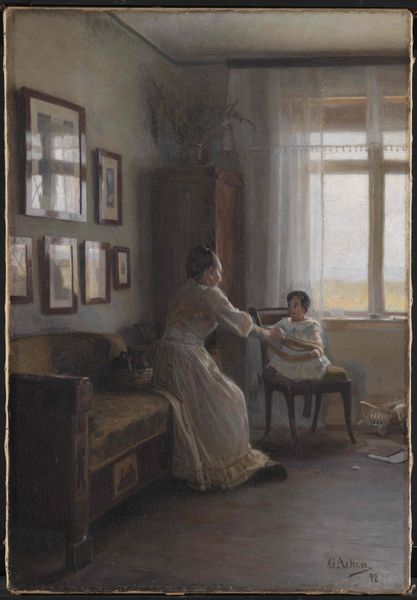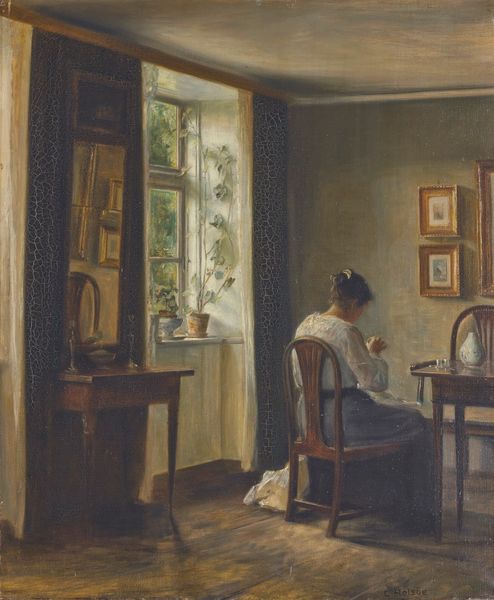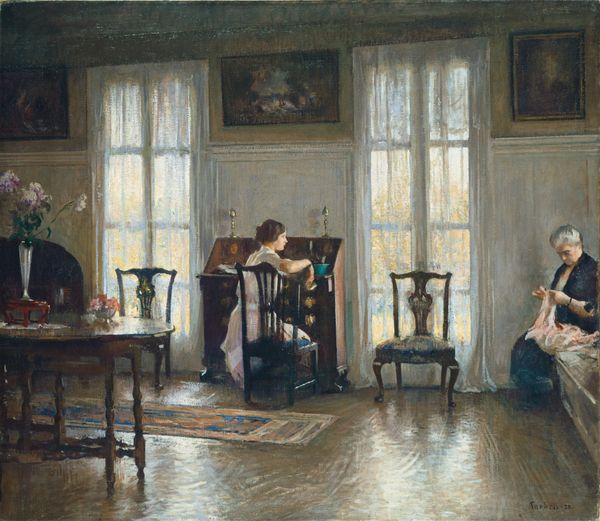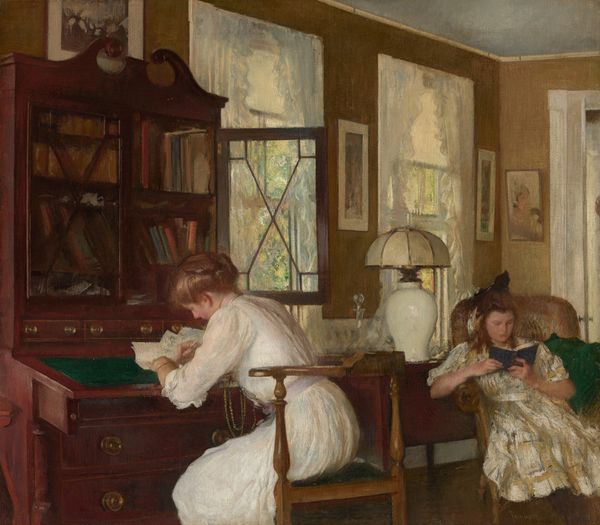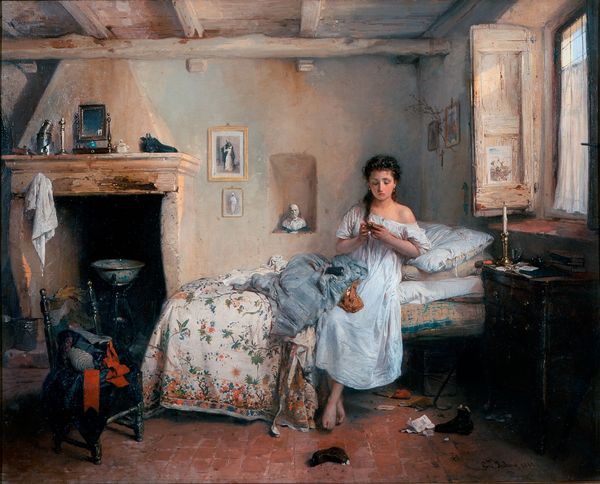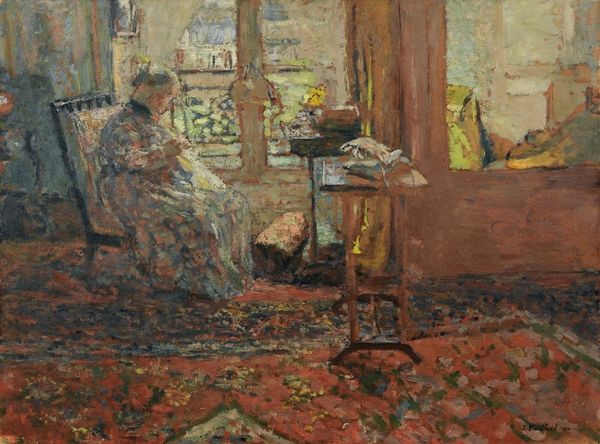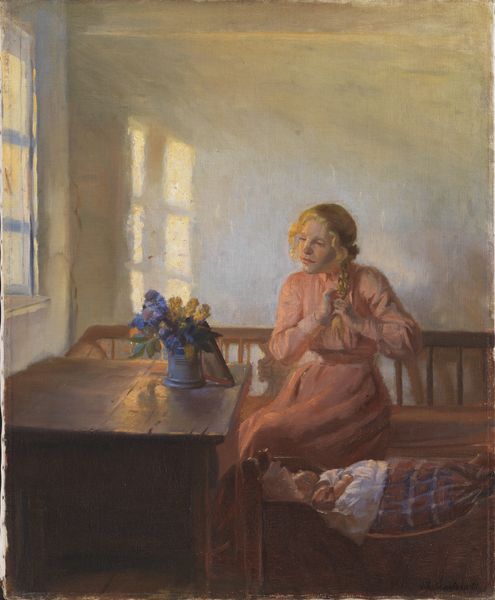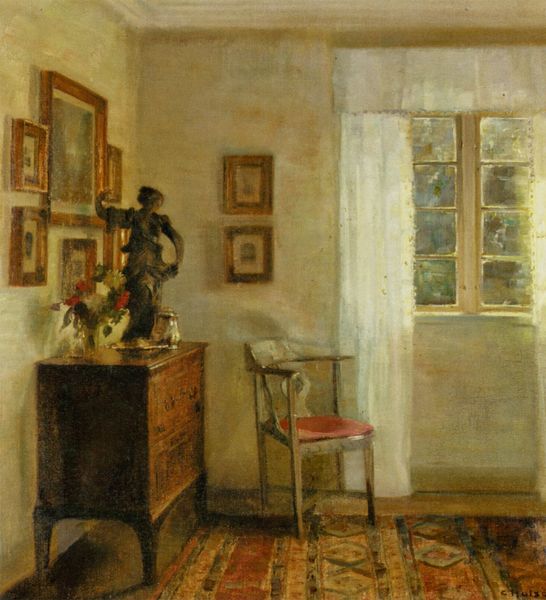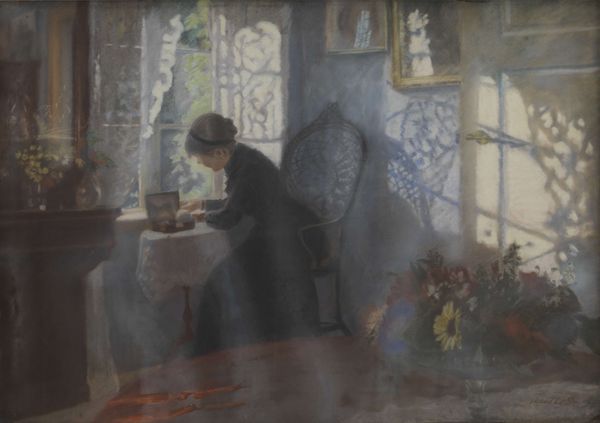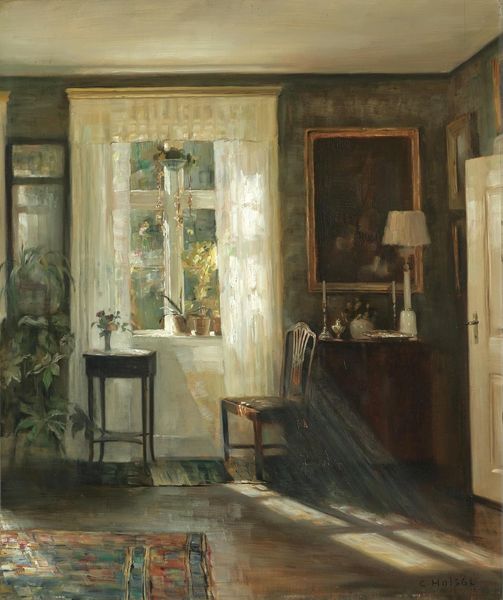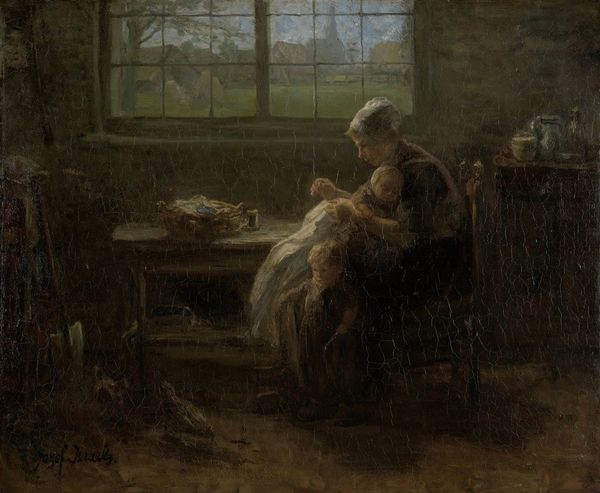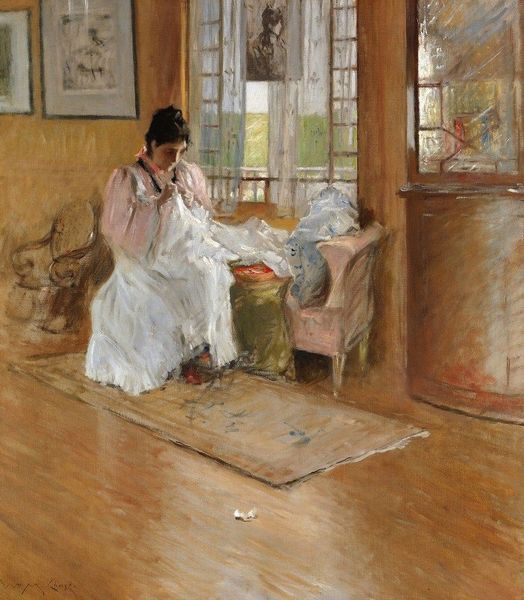
Copyright: Public domain
Curator: Frank Benson's "Rainy Day," painted in 1906. The scene depicts a woman seated indoors, presumably reading, bathed in the soft light filtering through a nearby window. Editor: The immediate sense is one of quiet domesticity. There's a comfortable, almost melancholic mood created by the muted color palette. Curator: Yes, Benson masterfully uses a limited tonal range – primarily variations of blues and browns – to evoke this atmosphere. Note how the diffused light interacts with the textures of the wall, the woman’s dress, and the fireplace. This all serves to flatten the picture plane somewhat. Editor: The composition suggests certain realities around art creation and its place for turn-of-the-century Boston Brahmins like Benson and his clientele. Leisure was of course something to consume in a genteel fashion, and the fireplace practically announces itself as a gathering place that defines that experience. The lack of a dramatic subject turns this work toward capturing fleeting moments. Curator: Precisely. Consider how the details of the composition reinforce that central theme: the placement of the round mirror, the hearth shelf, the vague presence of a landscape drawing through an open door to another room. There's a dialogue here between interior and exterior space, mediated by light and shadow. The open door creates a mirror effect where the subject (woman) mimics another figure at an unseen desk. The semiotic impact creates a narrative of seeing, capturing, and depicting. Editor: It's an intimate window into upper-class existence during that period, reflecting the value placed on quiet moments of reflection, even on an inclement day. I find that fascinating as it says less about the interior itself and more about social customs that dictate how someone behaves in this specific interior. Curator: I concur. And how the visual elements subtly enhance that sense of refined domesticity. I would posit that we see the interior's function emerge not just as social convention but also in the artist's focus on the compositional relations and arrangement. Editor: True enough. This really gets to the nuances of its subtle presentation as well as larger classist contexts. Curator: Indeed. Benson manages to bridge aesthetic concern with historic narrative very elegantly, it now seems.
Comments
No comments
Be the first to comment and join the conversation on the ultimate creative platform.
